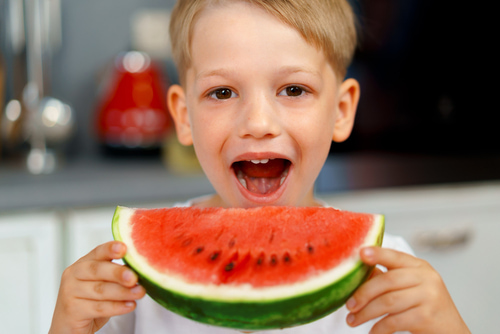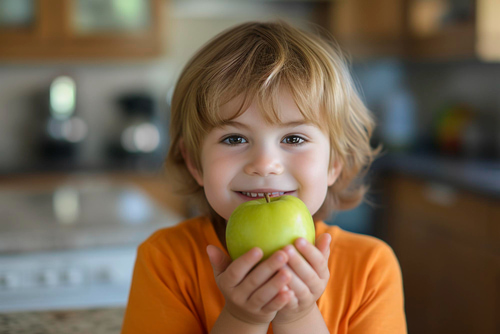Blog
How to incorporate fruits and vegetables in children?

Incorporating fruits and vegetables into children’s diets can be challenging, but it is essential to ensure their proper growth and development. Therefore, it’s important to make an effort to get the little ones in the house to consume these foods regularly.
Fortunately, there are many tricks to help achieve this, and today, at Kuoko, we’ll share some of them with you.
How to get children to eat fruits and vegetables?
 One key to getting children to eat fruits and vegetables is involving them in the process. This doesn’t mean handing your child a knife to peel an apple by themselves, especially if they are still very young, but rather making them part of the process, for example, during grocery shopping. Take your child to the supermarket and let them choose the fruit they want to eat or which recipe catches their attention. You’ll be surprised to see how colors attract them, reducing their resistance.
One key to getting children to eat fruits and vegetables is involving them in the process. This doesn’t mean handing your child a knife to peel an apple by themselves, especially if they are still very young, but rather making them part of the process, for example, during grocery shopping. Take your child to the supermarket and let them choose the fruit they want to eat or which recipe catches their attention. You’ll be surprised to see how colors attract them, reducing their resistance.
In addition, you should make an effort to present fruits and vegetables in an appealing way, using bright colors and interesting shapes.
Another effective strategy is to establish consistent eating routines, with regular meal and snack times, which can help children get used to consuming fruits and vegetables as part of their daily diet.
Finally, it’s essential for adults to set an example, showing enthusiasm for eating these foods and sharing family meals. If you want your child to eat fruits and vegetables, make sure all the adults in their life do the same.
What happens if a child doesn’t eat fruits and vegetables?
Fruits and vegetables are key components of any diet because they are rich in vitamins, minerals, fiber, and antioxidants, but they are especially important during childhood, as the nutrients they provide are essential for growth, cognitive development, and disease prevention.
Therefore, a diet lacking in fruits and vegetables can increase the risk of nutrient deficiencies, growth and developmental problems, as well as chronic diseases in the future.
Additionally, the absence of fruits and vegetables in a child’s diet can contribute to the development of unhealthy eating habits, such as a preference for processed foods high in fats, sugars, and sodium, increasing the risk of obesity and other diet-related diseases.
Best fruits and vegetables for children
While variety is key, some fruits and vegetables are particularly suitable for children due to their sweet taste and soft texture. Among the most popular fruits for children are strawberries, grapes, apples, bananas, and oranges.
As for vegetables, carrots, cherry tomatoes, cucumbers, and bell peppers are options that tend to be appealing to the little ones.
It’s important to remember that seasonal fruits and vegetables usually taste better and are more affordable, so it’s a good idea to take advantage of them when they’re available.
And if you find that your child doesn’t enjoy a particular fruit, blend it up and introduce them to the wide world of smoothies! There are many types of healthy smoothies for kids, and they’re sure to like at least one.
When it comes to your children’s diet, don’t be afraid to vary and try new things. As long as they maintain a balanced and varied diet, they’ll grow up healthy and strong, and establishing healthy eating habits from a young age will help lay the foundation for a healthy life in the future.


